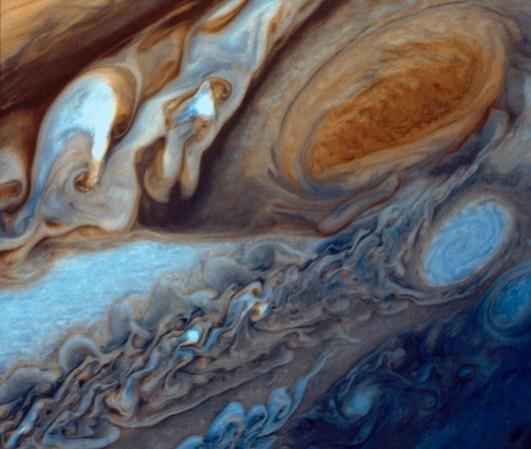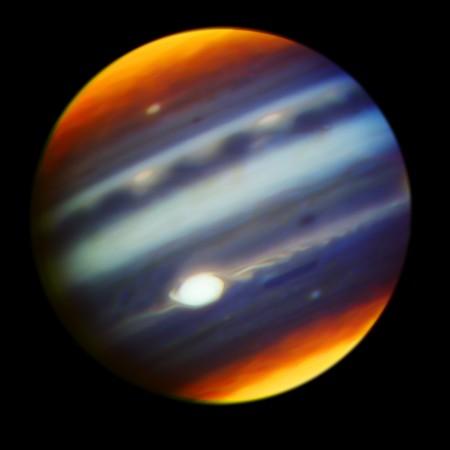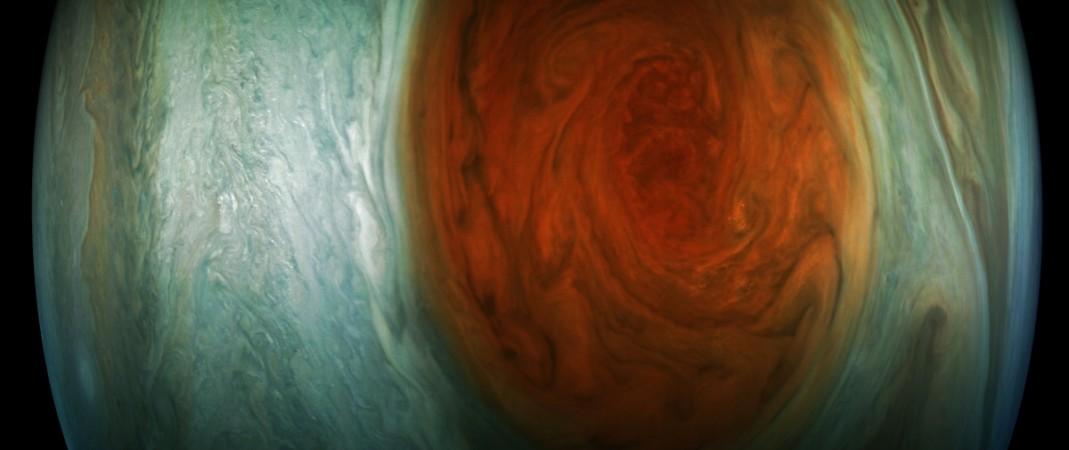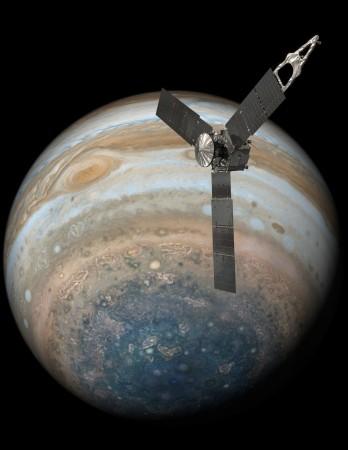
A citizen scientist Björn Jónsson used the data from JunoCam imager on NASA's Juno spacecraft to create an image of the gas-giant planet Jupiter's phenomenal Great Red Spot.
ALSO READ: Here's why scientists are developing NASA's Deep Space Habitat
The image was taken on July 10, 2017 at 10:10 p.m. EDT (July 11, at 7:40 am IST), while the Juno spacecraft was having its 7th close flyby of Jupiter from the cloud tops at a distance of 13,917 kilometres (8,648 miles) at a latitude of -32.6 degrees.
The image portrays the original colour of the Great Red Spot as well as its surrounding region, as it would appear to human eyes from the spot where Juno is located. A clear view of the stormy atmospheric zones present in and around the Great Red Spot is clearly noticeable.
Here are top 5 facts to know about the Great Red Spot:

1. The Great Red Spot is an anticyclonic storm which is being analysed by the astronomers since 1830 and is said to exist for more than 350 years.

2. The gas-giant planet's Great Red Spot is found to be 1.3 times wider than Earth. It is also known past 80 years that the feature is shrinking at a rate of 933.42km per year(580 miles per year), but it's not known whether the compression is temporary or permanent. As per the observations of the researchers, very small eddies are feeding into the storm, a NASA statement revealed.
The astronomers are still researching and formulating a hypothesis about the mysterious elements of this storm.

3. According to the infrared data accumulated by the astronomers, the Great Red Spot is found to be colder than most of the other clouds present on Jupiter, due to its higher altitude.

4. The researchers are estimating that the reaction of the Sun's radiation with the ammonium hydrosulfide present in Jupiter's outer atmosphere leads to the deep red colour of the storm.

5. NASA released some magnificent pictures of the Great Red Spot on July 12, 2017. The images were taken by the unmanned Juno probe during a pass by, which provided the closest look of the iconic feature so far.








